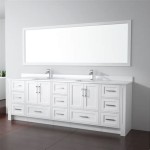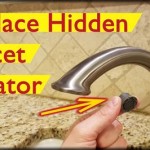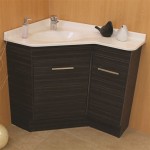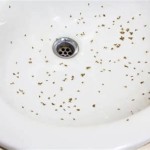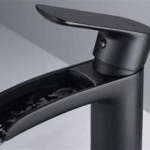How Much Does It Cost To Resurface A Bathroom?
Resurfacing, refinishing, or reglazing a bathroom can dramatically refresh its appearance without the extensive demolition and expense associated with a full renovation. This process involves applying a new coating to existing fixtures like bathtubs, sinks, and tile, effectively covering up imperfections and creating a fresh, clean surface. The cost of resurfacing a bathroom varies significantly depending on several factors, making it crucial to understand these variables to budget appropriately.
Determining the overall expense requires considering the size of the bathroom, the type and number of fixtures being resurfaced, the materials used, the labor costs in your geographic location, and the presence of any pre-existing damage that requires repair. Furthermore, DIY options exist, offering potential cost savings, but they also come with inherent risks and require a certain level of skill to achieve professional-looking results. This article will delve into the various factors that impact the cost of bathroom resurfacing, providing a comprehensive overview to assist in informed decision-making.
Key Factors Influencing Resurfacing Costs
Several key elements significantly impact the final cost of resurfacing a bathroom. Understanding these factors allows for a more accurate estimation and can help prioritize areas for cost management.
Fixture Type and Condition: The type of fixture being resurfaced, such as a bathtub, sink, or tile, directly affects the price. Bathtubs, being larger and more intricate, generally cost more to resurface than sinks. Similarly, the condition of the existing fixture plays a crucial role. Fixtures with extensive damage, such as deep scratches, chips, or rust, require more preparation work before the resurfacing process can begin. This additional preparation, which may include filling cracks, removing rust, and extensive sanding, increases both the labor time and the material costs, subsequently raising the overall price. The material of the existing fixture also influences the cost. Certain materials, like cast iron, require specific preparation and coating techniques, which can add to the expense.
Size of the Bathroom: The size of the bathroom dictates the amount of materials and labor required for resurfacing. A larger bathroom naturally requires more coating material to cover the surfaces. Furthermore, larger bathrooms often contain more fixtures, increasing the overall cost. The complexity of the bathroom's layout can also influence the price. Bathrooms with intricate tile patterns or difficult-to-reach areas may require more time and precision, potentially leading to higher labor costs. The size also impacts the ventilation requirements during the resurfacing process; larger spaces might necessitate more powerful ventilation equipment to ensure proper drying and curing of the coating.
Choice of Materials: The selection of resurfacing materials significantly affects the overall cost. Acrylic coatings, epoxy coatings, and polyurethane coatings are the most common types, each offering varying levels of durability, appearance, and price. Acrylic coatings are generally the most affordable option, providing a decent finish but potentially lacking the longevity of other options. Epoxy coatings offer greater durability and resistance to chemicals and scratches, making them a mid-range option in terms of cost and performance. Polyurethane coatings are typically the most expensive, providing the highest level of durability, a glossy finish, and excellent resistance to wear and tear. The choice of color and finish can also impact the cost, with custom colors or specialty finishes potentially incurring additional charges. Furthermore, the quality of the primer and topcoat used in the resurfacing process also contributes to the overall cost and the long-term performance of the resurfaced fixtures.
Typical Costs for Resurfacing Different Bathroom Fixtures
Understanding the typical cost range for resurfacing individual bathroom fixtures is essential for planning and budgeting. The following provides an overview of the average expenses associated with resurfacing common bathroom elements.
Bathtub Resurfacing: Resurfacing a bathtub generally ranges from $300 to $800. The specific cost depends on the bathtub's size, material, and condition. Acrylic bathtubs may be slightly cheaper to resurface than cast iron or porcelain tubs due to the differences in preparation required. Extensive damage, such as deep chips or cracks, will increase the price due to the additional repair work needed. The choice of coating material also influences the cost, with polyurethane coatings being the most expensive option. Furthermore, certain bathtub designs, such as clawfoot tubs, may require specialized handling and preparation, potentially increasing the overall resurfacing cost.
Sink Resurfacing: Resurfacing a sink typically costs between $150 and $450. The size and material of the sink are primary factors in determining the price. Smaller sinks, such as pedestal sinks, may cost less to resurface than larger vanity sinks. Similarly, the presence of chips, scratches, or stains will necessitate additional preparation work, increasing the overall expense. The complexity of the sink's design can also influence the cost; sinks with intricate details or hard-to-reach areas may require more time and precision, potentially leading to higher labor costs. Material type is a factor, with porcelain sinks potentially being slightly more challenging to resurface effectively than other materials.
Tile Resurfacing: Resurfacing bathroom tile typically ranges from $7 to $20 per square foot. The overall cost depends on the size of the tiled area, the type of tile, and the complexity of the tile pattern. Larger tile surfaces naturally require more material and labor, increasing the overall expense. Highly detailed patterns, such as intricate mosaics, may require more time and precision to resurface properly, potentially leading to higher labor costs. The condition of the grout also influences the cost; if the grout is heavily stained or damaged, it may require cleaning or replacement before resurfacing, adding to the overall expense. Some homeowners may choose to only resurface the grout, which is a less expensive alternative to resurfacing the entire tiled area. The type of sealant used after resurfacing will also have an impact on the cost.
DIY vs. Professional Resurfacing: Cost and Considerations
A significant decision to make when considering bathroom resurfacing is whether to undertake the project as a DIY endeavor or hire a professional. Each approach has its own set of cost implications, advantages, and disadvantages.
DIY Resurfacing: DIY bathroom resurfacing can save on labor costs, as the homeowner performs the work themselves. A DIY kit for bathtub or sink resurfacing typically ranges from $50 to $200, depending on the size and quality of the materials. However, DIY resurfacing requires significant time, effort, and skill. Proper preparation is crucial for a successful outcome, including thorough cleaning, sanding, and masking. Failure to properly prepare the surface can lead to peeling, chipping, or an uneven finish. Additionally, safety precautions must be taken when working with resurfacing chemicals, including wearing appropriate protective gear and ensuring adequate ventilation. DIY resurfacing may not achieve the same professional-quality finish as professional resurfacing, and mistakes can be costly to rectify. The long-term durability of DIY resurfacing may also be less than that of professionally applied coatings. Selecting high-quality materials is also essential for DIY, although this can significantly drive up the cost.
Professional Resurfacing: Hiring a professional bathroom resurfacing company offers several advantages. Professionals have the experience, expertise, and equipment to achieve a high-quality, durable finish. They also handle the preparation work, including cleaning, sanding, and repairing any damage. Professional resurfacing companies typically offer warranties on their work, providing peace of mind. However, professional resurfacing is more expensive than DIY resurfacing, due to the labor costs involved. The cost of professional resurfacing can range from $300 to $800 for a bathtub and $150 to $450 for a sink. When choosing a professional resurfacing company, it is essential to obtain multiple quotes, check references, and ensure that the company is licensed and insured. Asking about the specific materials they use and the preparation process can also help ensure a quality outcome. While the initial cost is higher, the improved quality, durability, and warranty protection may make professional resurfacing a more cost-effective option in the long run. The professional finish also adds value to the home.
Ultimately, the decision between DIY and professional resurfacing depends on the homeowner's budget, skill level, and desired outcome. If budget is a primary concern and the homeowner is comfortable with DIY projects, then DIY resurfacing may be a viable option. However, if a high-quality, durable finish is desired and the homeowner is willing to invest in professional services, then hiring a professional resurfacing company is recommended.

The Cost Of Resurfacing A Bathroom Shower Bathtub Tiles

How Much Does Bathroom Resurfacing Cost 2024 Hiretrades

Bathtub Refinishing Costs Maryland Tub Tile

How Much Does Reglazing Cost Newshine Bathtub Refinishing

Bathtub Refinishing Cost How Much Reglaze Showers Tile Countertops Floors Porcelain Laminate

Tub Resurfacing Ballpark Estimator Custom And Tile

Bathtub Refinishing Cost 2024 Guide Angi

Bathroom Bathtub Resurfacing Cost 2024 Oneflare

Bath Re Enamelling Cost How Much Does Resurfacing

Cost To Refinish And Reglaze A Bathtub 2024 Guide Forbes Home
Related Posts
